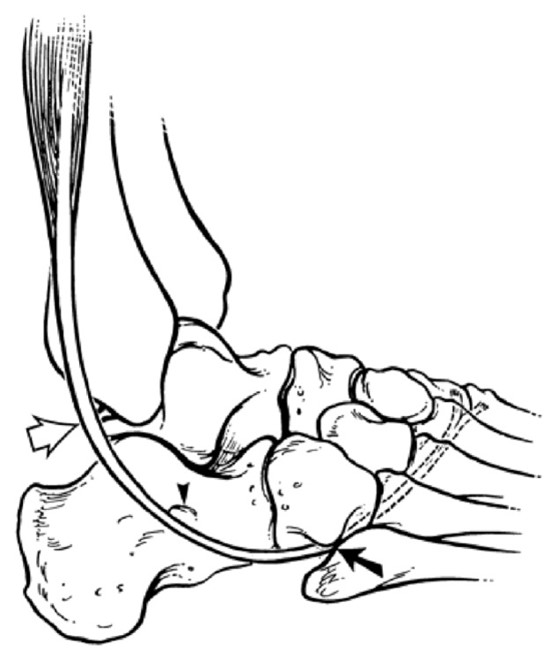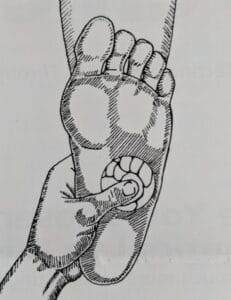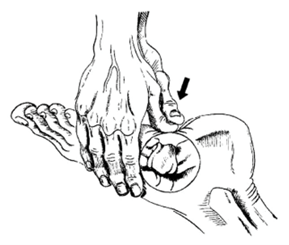Cuboid syndrome is a common etiology of lateral midfoot pain that is often misdiagnosed and not well understood. It is believed to originate from an incongruence of the calcaneocuboid joint from its desired inverted position to an everted position. This incongruence is often caused by the pull of the peroneus longus muscle on the cuboid bone during an inversion ankle sprain. It is commonly associated with a pes planus (flat) foot type which make up 80% of cases.
Figure 1

The calcaneocuboid joint is a component of the midfoot that has the important job of transitioning the foot from a mobile adaptor to a rigid lever during heel lift. Heel lift causes undue stress on the cuboid bone if it is not in optimal alignment, thus causing pain and an antalgic gait pattern. Impaired peroneus longus functionality may also affect calcaneocuboid joint stability. Interestingly, a study by Marshall et.al., found that 17% of ballerinas with foot or ankle injuries presented with cuboid syndrome (1).
Symptoms include diffuse pain in the lateral midfoot area that may radiate distally into the forefoot. A slight palpable sulcus may be observed on the dorsal-medial aspect of the cuboid bone as it sits in a poor (everted) position. The bottom of the foot may present with mild swelling and/or bruising. Tenderness is often felt with palpation of the plantar cuboid area and along the peroneus longus tendon.
Figure 2

Radiographs offer minimal aid in diagnosis but there are several specific clinical tests that are reliable for a clinical diagnosis. Radiographs can be helpful to rule out cuboid fracture and other differential diagnoses (2).
The most successful initial treatment for cuboid syndrome is cuboid manipulation therapy. A low amplitude, high velocity thrust can shift the cuboid into a preferred inverted position. This position can then be maintained with custom foot orthotics that correct the pes planus foot structure and incorporate a cuboid pad that holds the cuboid in the preferred alignment.
Figure 3

If your patient presents with a history of lateral ankle sprain and continued lateral midfoot pain, consider a referral to Sarah Higgins (Chiropodist/Pedorthist) at Liberty Village Athlete’s Care. Sarah specializes in manual foot therapy and custom foot orthotic assessment and manufacturing. No physician referral or prescription is necessary.
References
(1) Marshall P, Hamilton WG. Cuboid subluxation in ballet dancers. Am J Sports Med. 1992;20(2)169-175
(2) Durall CJ. Examination and treatment of cuboid syndrome: a literature review. Sports Health. 2011 Nov;3(6):514-9
















